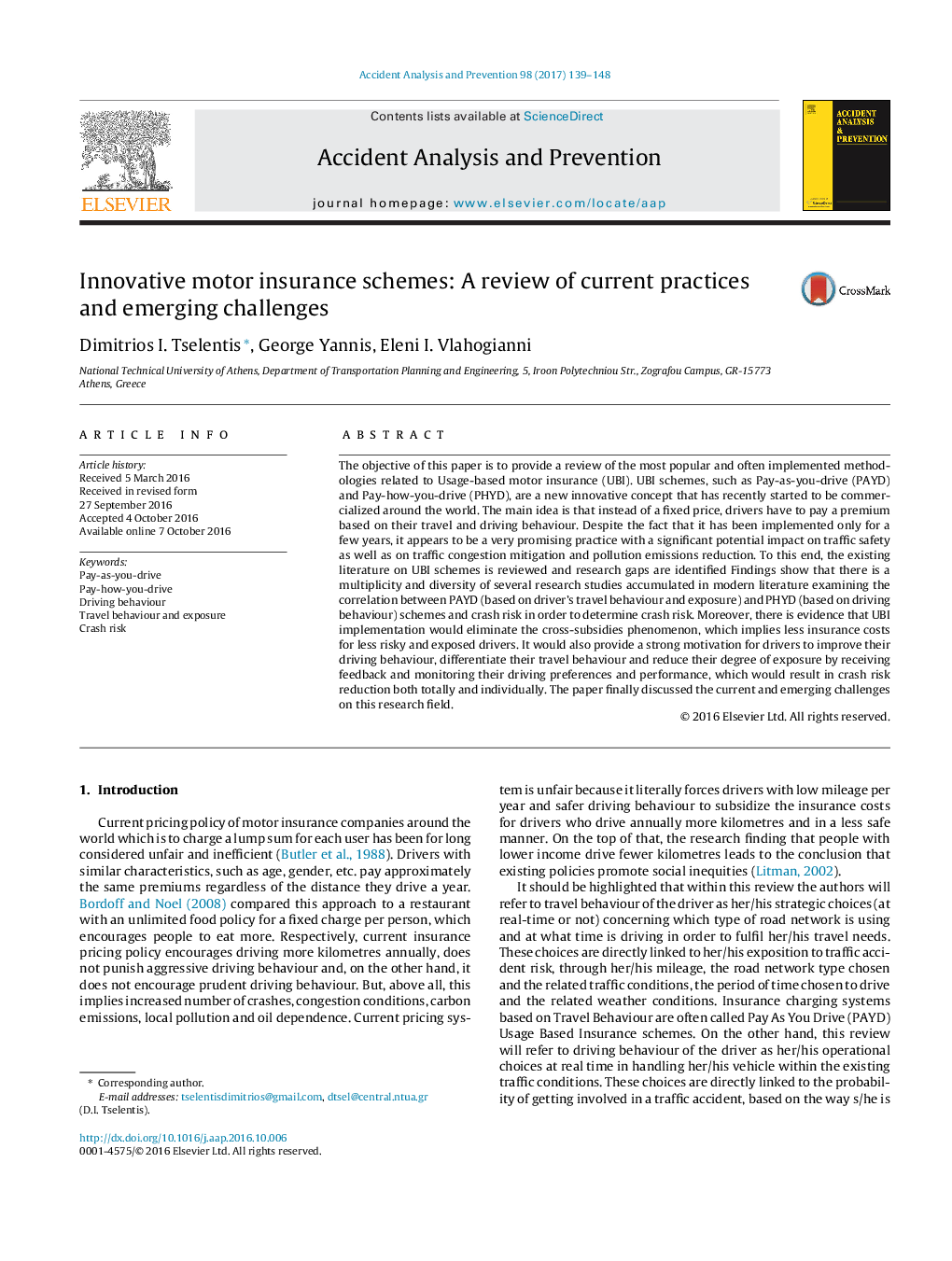| کد مقاله | کد نشریه | سال انتشار | مقاله انگلیسی | نسخه تمام متن |
|---|---|---|---|---|
| 4978826 | 1452900 | 2017 | 10 صفحه PDF | دانلود رایگان |
- A critical review of innovative usage-based insurance (UBI) schemes is conducted.
- Both exposure and behavioural indicators are incorporated in UBI models.
- Various data collection methods (OBD, Smartphone) are used to collect driving data.
- UBI appears to have a significant potential impact on traffic safety.
The objective of this paper is to provide a review of the most popular and often implemented methodologies related to Usage-based motor insurance (UBI). UBI schemes, such as Pay-as-you-drive (PAYD) and Pay-how-you-drive (PHYD), are a new innovative concept that has recently started to be commercialized around the world. The main idea is that instead of a fixed price, drivers have to pay a premium based on their travel and driving behaviour. Despite the fact that it has been implemented only for a few years, it appears to be a very promising practice with a significant potential impact on traffic safety as well as on traffic congestion mitigation and pollution emissions reduction. To this end, the existing literature on UBI schemes is reviewed and research gaps are identified Findings show that there is a multiplicity and diversity of several research studies accumulated in modern literature examining the correlation between PAYD (based on driver's travel behaviour and exposure) and PHYD (based on driving behaviour) schemes and crash risk in order to determine crash risk. Moreover, there is evidence that UBI implementation would eliminate the cross-subsidies phenomenon, which implies less insurance costs for less risky and exposed drivers. It would also provide a strong motivation for drivers to improve their driving behaviour, differentiate their travel behaviour and reduce their degree of exposure by receiving feedback and monitoring their driving preferences and performance, which would result in crash risk reduction both totally and individually. The paper finally discussed the current and emerging challenges on this research field.
Journal: Accident Analysis & Prevention - Volume 98, January 2017, Pages 139-148
